-
Study
-
Quick Links
- Open Days & Events
- Real-World Learning
- Unlock Your Potential
- Tuition Fees, Funding & Scholarships
- Real World Learning
-
Undergraduate
- Application Guides
- UCAS Exhibitions
- Extended Degrees
- School & College Outreach
- Information for Parents
-
Postgraduate
- Application Guide
- Postgraduate Research Degrees
- Flexible Learning
- Change Direction
- Register your Interest
-
Student Life
- Students' Union
- The Hub - Student Blog
- Accommodation
- Northumbria Sport
- Support for Students
-
Learning Experience
- Real-World Learning
- Research-enriched learning
- Graduate Futures
- The Business Clinic
- Study Abroad
-
-
International
International
Northumbria’s global footprint touches every continent across the world, through our global partnerships across 17 institutions in 10 countries, to our 277,000 strong alumni community and 150 recruitment partners – we prepare our students for the challenges of tomorrow. Discover more about how to join Northumbria’s global family or our partnerships.
View our Global Footprint-
Quick Links
- Course Search
- Undergraduate Study
- Postgraduate Study
- Information for Parents
- London Campus
- Northumbria Pathway
- Cost of Living
- Sign up for Information
-
International Students
- Information for International Students
- Northumbria and your Country
- International Events
- Application Guide
- Entry Requirements and Education Country Agents
- Global Offices and Regional Teams
- English Requirements
- English Language Centre
- International student support
- Cost of Living
-
International Fees and Funding
- International Undergraduate Fees
- International Undergraduate Funding
- International Masters Fees
- International Masters Funding
- International Postgraduate Research Fees
- International Postgraduate Research Funding
- Useful Financial Information
-
International Partners
- Agent and Representatives Network
- Global Partnerships
- Global Community
-
International Mobility
- Study Abroad
- Information for Incoming Exchange Students
-
-
Business
Business
The world is changing faster than ever before. The future is there to be won by organisations who find ways to turn today's possibilities into tomorrows competitive edge. In a connected world, collaboration can be the key to success.
More on our Business Services-
Business Quick Links
- Contact Us
- Business Events
- Research and Consultancy
- Education and Training
- Workforce Development Courses
- Join our mailing list
-
Education and Training
- Higher and Degree Apprenticeships
- Continuing Professional Development
- Apprenticeship Fees & Funding
- Apprenticeship FAQs
- How to Develop an Apprentice
- Apprenticeship Vacancies
- Enquire Now
-
Research and Consultancy
- Space
- Energy
- AI and Tech
- CHASE: Centre for Health and Social Equity
- NESST
-
-
Research
Research
Northumbria is a research-rich, business-focused, professional university with a global reputation for academic quality. We conduct ground-breaking research that is responsive to the science & technology, health & well being, economic and social and arts & cultural needs for the communities
Discover more about our Research-
Quick Links
- Research Peaks of Excellence
- Academic Departments
- Research Staff
- Postgraduate Research Studentships
- Research Events
-
Research at Northumbria
- Interdisciplinary Research Themes
- Research Impact
- REF
- Partners and Collaborators
-
Support for Researchers
- Research and Innovation Services Staff
- Researcher Development and Training
- Ethics, Integrity, and Trusted Research
- University Library
- Vice Chancellors Fellows
-
Research Degrees
- Postgraduate Research Overview
- Doctoral Training Partnerships and Centres
- Academic Departments
-
Research Culture
- Research Culture
- Research Culture Action Plan
- Concordats and Commitments
-
-
About Us
-
About Northumbria
- Our Strategy
- Our Staff
- Our Schools
- Place and Partnerships
- Leadership & Governance
- University Services
- Northumbria History
- Contact us
- Online Shop
-
-
Alumni
Alumni
Northumbria University is renowned for the calibre of its business-ready graduates. Our alumni network has over 253,000 graduates based in 178 countries worldwide in a range of sectors, our alumni are making a real impact on the world.
Our Alumni - Work For Us
Northumbria University is shining a light on its work relating to climate change before, during and beyond COP26. Today, we take a look at the work of our NUSTEM team which works closely with schools and parents to help to encourage young children and under-represented groups to change perceptions and consider a career in STEM related roles.
Climate change is one of today’s most pressing problems and we all have a role to play in tackling it. Businesses and workers are an integral part of the solution but there are currently not enough people in science and innovation-based careers. This is a significant issue because science and innovation can help unlock solutions to climate change and enable people to take meaningful climate action.
Northumbria University is conducting important research into why so many people – girls and women in particular – are choosing not to embark on careers in STEM (science, technology, engineering and maths) disciplines.
As part of this, the University is also taking action to broaden children’s career aspirations, and tackle societal stereotypes and unconscious biases that are leading girls to avoid careers traditionally considered more appropriate for males.
Carol Davenport, associate professor and director of NUSTEM at Northumbria University, is driving forward some of this research. The NUSTEM team works with children and young people, their families and teachers to encourage them to consider careers in STEM.
She said: “We need a broad and diverse workforce to deal with issues such as climate change. Currently there are insufficient numbers of people, particularly women, in STEM-related careers. Exploration of these subjects can help to solve real-world problems – and climate change is certainly one of those.
“The issue is that girls (and their families) often don’t see STEM as a viable career option. While previous research suggests that youngsters enjoy these subjects, they often hold stereotypical views of scientists. They visualise a male genius in a white coat so girls commonly don’t see themselves with a future or career in these sectors. If they focus on their own attributes and how these attributes could be useful in STEM careers, instead of on the usual stereotypes, they’ll start to identify this scientist or STEM professional as something they can aspire to be in their future career.”
Carol added that girls are influenced by societal views of what they should and shouldn’t do and what careers they should and shouldn’t go into.
“It’s not just a case of inspiring more girls to study STEM subjects and pursue careers in these disciplines; this approach has been trialled in the past and has been only partially effective,” she said.
“We need to shift the needle in terms of what society expects of them so we work with students, teachers, parents and employers to uncover unconscious biases and stereotypes that might be holding these girls back.
“For instance, if we’re discussing the working methods that scientists use in real life, do we use male pronouns? Do the resources that we use in the classroom show men in scientific careers and women in caring or teaching roles?”
Taking a different approach, NUSTEM has worked with teachers and STEM workers to develop 16 STEM attributes – or employability skills – that are often shown by people who work in STEM.
“These are attributes that children may already have, such
as being resilient or creative” said Carol. “This focus helps to build a
bridge between children’s self-concept of themselves, and their concept of
scientists and others who work in STEM and encourages young people – in
particular, underrepresented groups such as girls and people from disadvantaged
backgrounds – to see themselves as having the skills to work in STEM. Then they
will be in a much better position to use science, engineering and innovation to
deliver real-world solutions, such as those that can tackle climate
change.”
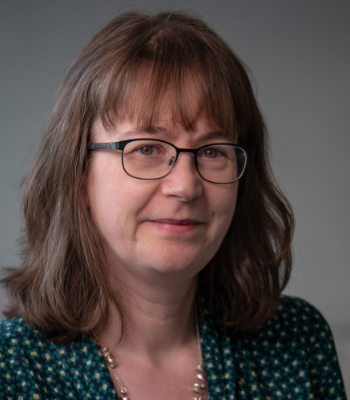
NUSTEM’s research has laid the foundation for several workshops with schools on key environmental issues. ‘Geography: Past, Present and Future’ was a series of three workshops on geography and environmental science held in a local primary school. It was inspired by the research of Northumbria University’s Cold and Palaeo-Environment (CAPE) research group
Academics encouraged children to consider how environmental science can be used to see what the environment was like in the past, measure what’s happening now and predict what it will be like in the future.
In one workshop, children took on the role of an environmental modeller, learning what a scientific model is and how data can be used to predict the future. The aim was to give children a deeper understanding of environmental science topics and careers, and make them feel more empowered to take action against climate change.
The project had a positive impact in several ways. It improved children’s understanding of environmental science topics, particularly among girls, who reported that their knowledge of climate change issues increased by 27%. Children had a better understanding and more positive perception of environmental science-related careers, as well as an increased desire to learn about climate change and act in an environmentally friendly way.
Carol said: “The children talked about environmental modelling and planning. Having an understanding of this subject could be a useful tool in the fight against climate change. Environmental modelling encompasses different STEM elements, such as mathematics and engineering, and is one of many career options available within STEM career paths. Currently not very many children, including girls, have taken up this option but by using our research and working with schools, parents and employers, we hope to change this.”
News
- National Fellowship honours Northumbria nursing leader
- Venice Biennale Fellowship
- First cohort of Civil Engineering Degree Apprentices graduate from Northumbria
- Northumbria expands results day support for students
- Northumbria academic recognised in the British Forces in Business Awards 2025
- £1.2m grant extends research into the benefits of breast milk for premature babies
- Northumbria graduate entrepreneur takes the AI industry by storm
- Study identifies attitudes towards personal data processing for national security
- Lifetime Brands brings student design concept to life
- New study reveals Arabia’s ‘green past’ over the last 8 million years
- How evaluation can reform health and social care services
- Researchers embark on a project to further explore the experiences of children from military families
- Northumbria University's pioneering event series returns with insights on experiential and simulated learning
- Support for doctoral students to explore the experiences of women who have been in prison
- Funding boost to transform breastfeeding education and practice
- A new brand of coffee culture takes hold in the North East
- BBRSC awards £6m of funding for North East Bioscience Doctoral Students
- £3m funding to evaluate health and social care improvements
- Balfour Beatty apprentices graduate from Northumbria University
- Long COVID research team wins global award
- Northumbria researchers lead discussions at NIHR event on multiple and complex needs
- Healthcare training facility opens to support delivery of new T-level course
- Young people praise Northumbria University for delivery of HAF Plus pilot
- Nursing academics co-produce new play with Alphabetti Theatre
- Research project to explore the experiences of young people from military families
- Academy of Social Sciences welcomes two Northumbria Professors to its Fellowship
- Northumbria University set to host the Royal College of Nursings International Nursing Research Conference 2024
- 2.5m Award Funds Project To Encourage More People Into Health Research Careers
- Advice available for students ahead of A-level results day
- Teaching excellence recognised with two national awards
- Northumbria law student crowned first Apprentice of the Year for the region
- Northumbria University launches summer activities to support delivery of Holiday Activities and Food programme
- UK health leader receives honorary degree from Northumbria University
- Use of AI in diabetes education achieves national recognition
- Research animation explores first-hand experiences of receiving online support for eating disorders
- Careers event supports graduate employment opportunities
- Northumbria University announces £50m space skills, research and development centre set to transform the UK space industry
- The American Academy of Nursing honours Northumbria Professor with fellowship
- New report calls for more support for schools to improve health and wellbeing in children and young people
- AI experts explore the ethical use of video technology to support patients at risk of falls
- British Council Fellows selected from Northumbria University for Venice Biennale
- Prestigious nomination for Northumbria cyber security students
- Aspiring Architect wins prestigious industry awards
- Lottery funding announced to support mental health through creative education
- Early intervention can reduce food insecurity among military veterans
- Researching ethical review to support Responsible AI in Policing
- Northumbria named Best Design School at showcase New York Show
- North East universities working together
- Polar ice sheet melting records have toppled during the past decade
- Beyond Sustainability
- Brewing success: research reveals pandemic key learnings for future growth in craft beer industry
- City's universities among UK best
- Famous faces prepare to take to the stage to bring a research-based performance to life
- Insights into British and other immigrant sailors in the US Navy
- International appointment for law academic
- Lockdown hobby inspires award-winning business launch for Northumbria student
- Lasting tribute to Newcastle’s original feminist
- Outstanding service of Northumbria Professor recognised with international award
- Northumbria academics support teenagers to take the lead in wellbeing research
- Northumbria University becomes UK's first home of world-leading spectrometer
- Northumbria's Vice-Chancellor and Chief Executive to step down
- Out of this world experience for budding space scientists
- Northumbria engineering graduate named as one of the top 50 women in the industry
- Northumbria University signs up to sustainable fashion pledge
- Northumbria demonstrates commitment to mental health by joining Mental Health Charter Programme
- Virtual reality tool that helps people to assess household carbon emissions to go on display at COP26
- EXPERT COMMENT: Why thieves using e-scooters are targeting farms to steal £3,000 quad bikes, and what farmers can do to prevent it
- Exhibition of lecturer’s woodwork will help visitors reimagine Roman life along Hadrian’s Wall
- Students reimagine food economy at international Biodesign Challenge Summit
- Northumbria storms Blackboard Catalyst Awards
- Breaking news: Northumbria’s Spring/Summer Newspaper is here!
- UK’s first ever nursing degree apprentices graduate and join the frontline
- Massive decrease in fruit and vegetable intake reported by children receiving free school meals following lockdown
- Northumbria awards honorary degrees at University’s latest congregations
Latest News and Features

Northumbria University to co-host fifth Newcastle Climate Change Forum
Northumbria University, in collaboration with Newcastle University and Newcastle City Council…

Northumbria students gain policymaking experience through Civil Service challenge
Students from Northumbria University have gained valuable insight into government policymaking…
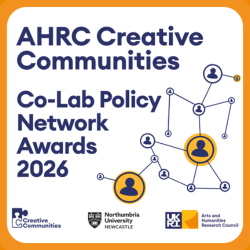
New funding to catalyse devolved cultural policy making
The AHRC Creative Communities programme based at Northumbria University has today announced…
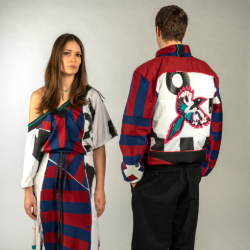
Newcastle United kit given new life in unique sustainability collaboration
Fashion items made from recycled Newcastle United shirts have gone on display in Eldon Square…
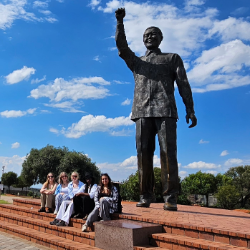
Northumbria Social Work students gain global perspective on 4,000km South African placement
Five MA Social Work students from Northumbria University (Alice Henderson, Ava Lister, Avi…
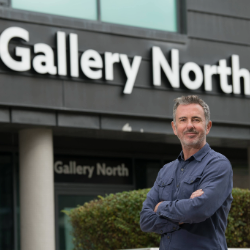
Arts centre with a difference – Northumbria launches new series of public exhibitions
Northumbria University's School of Design, Arts and Creative Industries has announced the launch…
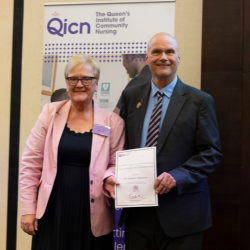
National Fellowship honours Northumbria nursing leader
A leading academic in palliative and end-of-life care at Northumbria University has been recognised…
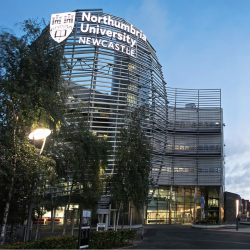
£1.3m national study launches to evaluate changes to police involvement in mental health crisis responses
A major new research project will examine how changes to police involvement in mental health…
Upcoming events
On Weaving
Gallery North

Viruses of Microbes-UK (VoM-UK) Conference 2026
Northumbria University

Holocaust Memorial Day 2026 - Bridging Generations: Generational Voices and Silences
The Great Hall
-

Commercialising SHAPE Innovations and Impact
Northumbria University
-
